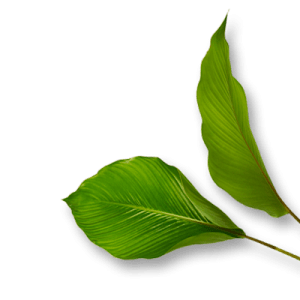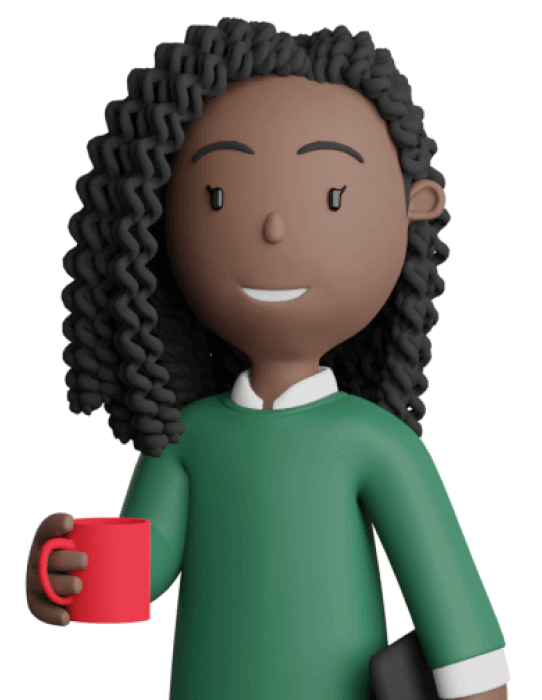Every Child Matters
Learn about the importance of Orange Shirt Day through videos, read-aloud, and an Orange Shirt activity.

Overview
Introduces students to what Orange Shirt Day is and why it is important to learn about the history of residential schools, reconciliation, and why Every Child Matters. Share videos of Phyllis’ story and/or read a book about her orange shirt. Conclude the lesson with students expressing their feelings through art in one (or all) of the included options.
Instructions
What you'll need
For colouring activity:
- Shirt template - one per student
- Colouring supplies
- Scissors
For rock painting activity:
- One small rock per student, preferably with a flat surface for painting
- Variety of paintbrushes
- Variety of paint colours:
- Acrylic paints if rocks to be displayed outdoors
- Water-based paints if rocks to be displayed indoors
- Optional: Student Instructions handout - one per table
For blanket square activity:
- Blanket Template - one per student
- Colouring supplies
- Scissors
- Glue sticks
Orange Shirt Day
- Ask students if they know what Orange Shirt Day is. For students who are newcomers, they may not be familiar with, or even have heard of Orange Shirt Day. Refer to Teaching Notes to share what Orange Shirt Day is about.
- Discuss with students Canada’s history of residential schools and how they are not the same as schools they attend today.
- [Optional] To understand what residential schools were, watch the video St. Joseph's Residential School Stories (length: 3:02) on YouTube.
- Share Phyllis’ History of the Orange Shirt Story (length: 7:07) where she discusses her experience when she attended residential school.
- After the video, ask students if they have questions about Phyllis’ story.
- Ask students to share their reflections and feelings about the video:
- Ask students to use words to describe how it would feel to be at residential school and separated from their families.
- Ask students to use words to describe how they should feel at a good school.
- Ask students to complete the sentences: “I am important because…”; "I matter because…"; "my friend is important because…”
- Reflect on the importance of kindness and reconciliation:
- For younger students - Discuss the importance of supporting each other by showing each other kindness, care, and compassion. Refer to teaching notes about why each child who attended residential school and never came home was important and mattered.
- For older students - Discuss the importance of Canada’s steps towards reconciliation (refer to teaching notes). Show the video What is reconciliation? (length: 4:46) from CBC Kids News. This video introduces students to the Truth and Reconciliation Commission and Orange Shirt Day, and suggests a call to action for youth to advocate for Indigenous peoples.
- Choose one (or all) of the following art activities to express their feelings about Orange Shirt Day with.
Shirt colouring
- Give each student one T-shirt printout template.
- Ask students to either draw, write words, or write sentences that express why Every Child Matters.
- Encourage the students to colour the shirt orange and ask them to think about what that colour symbolizes.
- Explain to students that the Indigenous flower art signifies the growth and resilience of Indigenous peoples despite historical injustices. Like a flower pushing through adversity to bloom, Orange Shirt Day is about remembrance, education, and healing.
- Ask students to cut out the t-shirts from the templates.
- Optional: Ask volunteers to share what they wrote or drew on their shirt design.
- Display students’ t-shirt templates in the school, for example by posting them to a bulletin board in the overall shape of a t-shirt.
Rock painting
- Collect enough rocks for every student, preferably with flat surfaces to paint.
- Alternatively, teachers can plan for students to collect rocks from home and bring them to class, or plan a walk around the school for students to collect rocks they want to paint.
- Set out paint and paint brushes, and get your students to paint their rocks according to the Every Child Matters theme.
- Encourage students to choose a word to express artistically why every child matters.
- Encourage students to be creative with their rocks. Remind students to add the colour orange as a symbol for Orange Shirt Day.
- Allow the paint on the rocks to dry for approximately 2 hours or overnight.
- Take students outdoors to find a place to carefully place their rocks as a remembrance and memorial for Orange Shirt Day, or get them to each put their rock onto an indoor display.
Blanket squares
- Give each student one Blanket Template printed handout.
- Ask them to write what they can do to help with reconciliation efforts in the middle space on the blanket square. (For example: Listen to Indigenous Peoples' stories, read and ask questions about the history of Indigenous Peoples)
- Referring to the teacher notes, encourage students to choose a word: care, respect, and honour translated into the Carrier/Dakelh Indigenous language (see teaching notes) and add this word to the blanket square. Students are encouraged to choose a word that expresses why they think reconciliation is important.
- Ask students to colour the blanket square and remind them about the importance of adding the colour orange as a symbol.
- Explain the artwork on the blanket square and encourage them to colour it in. Art on the blanket square represents Earth’s three realms: Sky, Earth, and Water. #1 is an interpretation of a bird flying in the sky. #2 and #3 are trees on the land, and #4 is a river with trees and flowers growing along its banks.
- After the blanket square is finished, ask students to cut out the blanket square from the template.
- Students can connect the blanket squares with each other with glue sticks to create one collaborative blanket design.
- Students are encouraged to display their completed blanket squares or large blanket, at the school in honour of Orange Shirt Day.
Modify or extend this activity
- In addition to sharing Phyllis’ video, teachers can read You Hold Me Up by Monique Gray Smith, published by Orca Books, to encourage children to show love and support for each other’s well-being. This book helps foster empathy and encourage respect among peers. Instead of reading aloud, teachers have the option to share a read-aloud video of the book (length: 1:50).
- Discuss how Indigenous students were not “held up”.
- Using the book, discuss how our actions and words have the power to bring others happiness and inclusion.
- Ask students what they think the top three most important words are that describe why every child matters, then ask them to draw a picture to express those feelings.
- Extend the activity by reading the book When I Was Eight by Christy Jordan-Fenton and Margaret Pokiak-Fenton based on the true story of Olemaun Pokiak, an Inuit girl who is determined to learn to read despite the challenges she faces at a residential school. Ask students about their reflections on how they think Olemaun felt and to write down words or artistically express their feelings on the Orange Shirt Day templates.
- Students are encouraged to arrange their rocks to form a “T-shirt” shape. Encourage other students from other classes to add to the T-shirt formation.
- Learn about The Witness Blanket project, an art installation project created by master carver Carey Newman that recognizes the dark history of residential schools, honours the children who never came home, and represents ongoing reconciliation efforts. Note that some information on this website may be upsetting to some students and may be more appropriate for older students.
Curriculum Fit
Core Competencies
Communication
- Students develop shared understandings of information, issues, situations, and problems in pursuit of common purposes and goals.
Thinking
- Students apply critical, metacognitive, and reflective thinking in given situations, and relate this thinking to other experiences.
Personal and Social
- Students value diversity, defend human rights, advocate for issues, and interact ethically with others.
First People’s Principles of Learning: This lesson supports students’ understanding of the importance of Orange Shirt Day and the history of residential schools in Canada. It is meant to show students that every child matters and is important, and to remember those who never came home from residential schools. (Excerpt from Orange Shirt Day website)
English Language Arts
Big Ideas:
- Everyone has a unique story to share. (K-3)
- Through listening and speaking, we connect with others and share our world. (K-3)
- Stories and other texts connect us to ourselves, our families, and our communities. (K-3)
- Using language in creative and playful ways helps us understand how language works. (K-3)
- Exploring stories and other texts helps us understand ourselves and make connections to others and to the world. (4-7)
- Questioning what we hear, read, and view contributes to our ability to be educated and engaged citizens. (4-7)
- Developing our understanding of how language works allows us to use it purposefully. (4-7)
Curricular Competencies:
- Use sources of information and prior knowledge to make meaning.
- Use developmentally appropriate reading, listening, and viewing strategies to make meaning. (K-3)
- Engage actively as listeners, viewers, and readers, as appropriate, to develop understanding of self, identity, and community.
- Recognize the importance of story in personal, family, and community identity. (K-3)
- Show awareness of how story in First Peoples cultures connects people to family and community. (K-3)
- Exchange ideas and perspectives to build shared understanding. (K-3)
- Apply a variety of thinking skills to gain meaning from texts.
- Use personal experience and knowledge to connect to text and deepen understanding of self, community, and world (4-7)
- Access information and ideas from a variety of sources and from prior knowledge to build understanding. (4-7)
- Respond to text in personal, creative, and critical ways. (4-7)
Social Studies
Big Ideas:
- Our communities are diverse and made of individuals who have a lot in common. (K-3)
- Our rights, roles, and responsibilities are important for building strong communities. (K-3)
- Learning about indigenous peoples nurtures multicultural awareness and respect for diversity. (K-3)
- Indigenous societies throughout the world value the well-being of the self, the land, spirits, and ancestors. (K-3)
- Interactions between First Peoples and Europeans lead to conflict and cooperation, which continues to shape Canada’s identity. (4-7)
- Canada’s policies and treatment of minority peoples have negative and positive legacies. (4-7)
- Systems of government vary in their respect for human rights and freedoms. (4-7)
Curricular Competencies:
- Explain the significance of personal or local events, objects, people, or places. (K-3)
- Identify fair and unfair aspects of events, decisions, or actions in their lives and consider appropriate courses of action (ethical judgment). (K-3)
- Explore different perspectives on people, places, issues, or events in their lives (perspective). (K-3)
- Explain the significance of personal or local events, objects, people, or places. (4-7)
- Identify fair and unfair aspects of events, decisions, or actions in their lives and consider appropriate courses of action (ethical judgment). (4-7)
- Explore different perspectives on people, places, issues, or events in their lives (perspective). (4-7)
Assessments
- Assess students' effort to describe their feelings and thoughts after watching Phyllis’ video.
- Assess students' understanding of the significance of Orange Shirt Day.
- Assess students' understanding of empathy and respect through their responses and reflections during class discussion.
- Assess students’ creativity and their ability to express their feelings through the Orange Shirt activity.
Teaching Notes
These teaching notes contain answers to questions about the purpose and importance of Orange Shirt Day, truth and reconciliation, and Indigenous language revitalization. There are also many other resources linked for deeper learning on the topic.
- Who are Indigenous peoples? The Inuit, Métis, and First Nations people are Indigenous and Aboriginal people of what is now known as North America. Many of these cultures called the land Turtle Island, as the continent resembles the shell of a turtle. There are more than 1.67 million people in Canada who identify themselves as Indigenous. The Inuit are the peoples of the Arctic and also means “the people of the Inuktitut language. Métis people are cultural identities that come from the union between Aboriginal and European people in Canada. First Nations describes the “first peoples” or Aboriginal people of Canada who are neither Métis nor Inuit.
- What were residential schools? Children of the Indigenous peoples were taken from their families and sent to residential schools. The goal was to make the children follow a different culture than their own. This happened for many years and stopped in 1996. Residential schools were not a good place for the Indigenous children. Many of them were hurt physically and emotionally. Some never returned home to their families.
- What is Orange Shirt Day? Orange Shirt Day takes place every year on September 30. It is a day to remember the people who suffered from the many impacts of residential schools.
- Who is Phyllis Webstad? Phyllis Webstad is a First Nations woman who is known for her story about a special orange shirt. When she was a young girl, she wore a bright orange shirt to her first day at a residential school, but it was taken away from her. This shirt has become a symbol of remembering the children who went to these schools and the importance of treating everyone with respect and kindness. Phyllis' story helps us learn about history and how we should always show care for others. Learn more about Phyllis’ story: orangeshirtday.org/phyllis-story.
- Why was Phyllis Webstad so upset about her orange shirt? Phyllis Webstad was upset about her orange shirt because it was taken from her on her first day at a residential school, and it was a special gift from her grandmother, symbolizing her identity and belonging. When she arrived at the school, her shirt was taken away along with her other personal belongings, leaving her feeling disrespected and devalued. This experience represented a broader attempt to strip Indigenous children of their culture and identity.
- What does the Orange Shirt Day symbolize? The orange shirt now symbolizes the resilience of Indigenous communities and serves as a reminder of the importance of honoring and preserving their cultural heritage. Orange Shirt Day, which grew from Phyllis Webstad's story, is observed to acknowledge the painful legacy of residential schools and to promote reconciliation and respect for Indigenous peoples.
- Explaining why every child matters and is important: The significance of "Every Child Matters" on Orange Shirt Day highlights the importance of respecting and valuing each person. For example, Phyllis Webstad’s story or reading You Hold Me Up by Monique Gray-Smith, students learn that everyone deserves to be treated with respect and kindness, and that remembering this helps us honor the experiences of those who were harmed. The message "Every Child Matters" reminds us to celebrate and respect each individual’s identity and contributions, reinforcing that everyone is important and deserving of care and dignity.
- What is truth and reconciliation? Truth and Reconciliation is an important process aimed at addressing and healing the injustices faced by Indigenous peoples. It began with the Truth and Reconciliation Commission of Canada, which was set up to investigate the impact of residential schools on Indigenous communities. This process involves acknowledging the painful history of these schools, where many Indigenous children were taken from their families and communities, often facing abuse and cultural suppression. The goal is to educate people about these injustices, promote understanding, and build respectful relationships between Indigenous and non-Indigenous communities. By integrating these lessons into the classroom, teachers help students understand the importance of respect and equality, fostering a more inclusive and informed society.
- Indigenous language revitalization: Preserving and revitalizing Indigenous languages is important because they carry unique cultural expressions and traditional knowledge. Language is one way to preserve customs, stories, and practices. It’s important to note that language is not limited to spoken word, as it can include actions and gestures. Language helps us know about the land and relationships with the world from different perspectives, towards building community and promotes pride and identity among Indigenous people. In this activity, students are encouraged to learn a few words from the Carrier/Dakelh Peoples. The word 'care' is whughunli, and 'honour' is budihti'.
Additional resources
Books to read aloud:
- Kookum’s Red Shoes by Peter Evyindson — A children's book that tells the poignant story of an elderly woman, Kookum, reflecting on her childhood experiences. The narrative centers on her life-changing experience in a residential school.
- I Am Not a Number by Jenny Kay Dupuis and Kathy Kacer — A children's book based on the true story of Dupuis' grandmother, who was taken from her family and placed in a residential school. This book educates young readers about a painful part of Canadian history and the impact of residential schools on Indigenous communities.
- Shi-shi-etko by Nicola Campbell — A children's book that tells the story of a young girl named Shi-shi-etko who must leave her family and the familiar surroundings of her home to attend a residential school in just four days. The book captures the impact of the residential school system on Indigenous families and highlights the importance of cultural heritage and memory.
University of British Columbia’s Library: Indigenous Children’s Literature on the Indian Residential School system. Many books are written by survivors who speak about their experiences. Visit guides.library.ubc.ca/Indigenouschildrensliterature/irss.
The Canadian Children’s Book Centre: This source provides suggestions for books to highlight voices in Indigenous communities and features books for different ages with a short synopsis for each book. Visit bookcentre.ca/resource-library/indigenous-history-book-list-1.
First People’s Maps: Explore this interactive web-based map of British Columbia and the diverse Indigenous languages and arts found in different parts of the province. There are many clickable sites that describe the art, language and heritage of hundreds of Indigenous communities. Visit maps.fpcc.ca.
Videos:
- Writing the Land (NFB): This short documentary (length: 7:50) is narrated by Elder Larry Grant, who is of Musqueam and Chinese descent. He speaks about the land and his family, and about finding his roots through language. This is a gentle narrative by Elder Grant and shares the interwoven cultures with Indigenous peoples because of historical industrialization. (Watch here)
- Messages for kids on Orange Shirt Day (CBC): This video (6:01) from CBC Kids News shares first-hand testimonies about the importance of Orange Shirt Day as a way to honour residential school survivors. Includes messages from Indigenous children and Dr. Cindy Blackstock. Suitable for students in Kindergarten to Grade 3, that explains Orange Shirt Day by Indigenous Youth who are social media influencers. (Watch here)
- The word Indigenous—explained (CBC): This short video (2:27) from CBC Kids News explains what the word Indigenous means to young students. This is an animated video and goes into further explanation of the proper usage of the word Indigenous, and explains why other references may be hurtful. (Watch here)
Additional teaching resources:
- University of British Columbia’s Indian Residential School History and Dialogue Center: UBC’s teaching and learning resources have further materials to support learning about Residential Schools and their history in Canada. This link provides a search function to search for books and media for students in Kindergarten through Grade 12, including resources for adults. Visit irshdc.ubc.ca/learn/orange-shirt-day-resources.
- Assembly of First Nations Educational Toolkit: The resources from the Assembly of First Nations provides a toolkit to “bring together First Nations and non-First Nations people and foster a spirit of cooperation, understanding, and action” with learning modules for educators and the public. Topics include Residential Schools, Impacts of Contact, The Indian Act, Timelines and Maps, and a First Nations Performance Indicators checklist for assessing and developing programs to enhance learning from a First Nations perspective. Visit education.afn.ca/afntoolkit.
- Orange Shirt Day Society: A variety of teaching and learning resources and guides that are free to download for various grades. Including resources in French and English. Visit orangeshirtday.org/reconciliation-hub/for-teachers.








